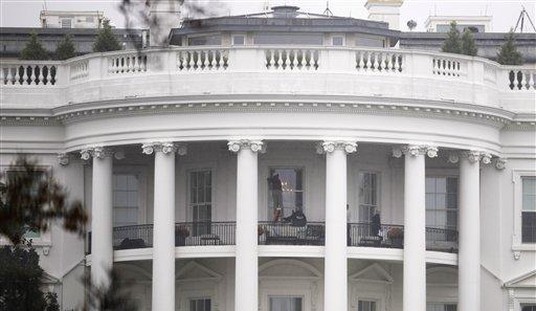Editor’s Note: See the previous installments in P. David Hornik’s fascinating series on the Hebrew language: “4 Ways That the Hebrew Language Redeemed the Jewish People in Our Time,” “4 Ways the World Changed for Me When I Learned Hebrew,” “4 Biblical Sayings That Spice Up Today’s Hebrew,” “5 Ways Hebrew Is (Very) Different from English,” and “10 English Words That Are—at Heart—Hebrew Words.“
Hebrew goes back very far in the Holy Land. The earliest inscription believed to be in Hebrew, discovered in 2008 at the Khirbet Qeiyafa archeological site, dates from the 10th century BCE.
Professor Gershon Galil of the University of Haifa is convinced that it’s a Hebrew inscription and says it
indicates that the Kingdom of Israel already existed in the 10th century BCE and that at least some of the biblical texts were written hundreds of years before the dates presented in current research.
Other scholars, though, believe the inscription is written, at least partly, in other ancient languages like Phoenician, Moabite, or Canaanite.
Other finds, however—including, of course, the Dead Sea Scrolls themselves—are indisputably in Hebrew. What follows are some of the more notable examples out of many.
1. The Siloam Inscription.
Back in the 8th century BCE, Hezekiah, king of Judea, wanted to ward off an Assyrian siege of Jerusalem. One way was to make sure they’d have no water: Hezekiah ordered that the waters of the Gihon Spring, located outside the city walls, be diverted by a tunnel to the Pool of Siloam within the city.
The Bible puts it this way (2 Chronicles 32, 3-4):
And he took counsel with his officers and his mighty men to stop up the waters of the fountains that were outside the city, and they assisted him. And a large multitude gathered and stopped up all the fountains and the stream that flowed in the midst of the land, saying, “Why should the kings of Assyria come and find much water?”
Over two and a half millennia later, in 1880, a boy who was wading through the tunnel came upon an inscription carved into its rock. After being cut from the wall, the inscription—which, it turned out, is in ancient Hebrew—made its way to the Istanbul Archeology Museum where it remains to this day.
This source gives a simple and partial translation of what it says:
The tunneling was completed…. While the hewers wielded the ax, each man toward his fellow…there was heard a man’s voice calling to his fellow…the hewers hacked each toward the other, ax against ax, and the water flowed from the spring to the pool, a distance of 1,200 cubits….
Dating of the Siloam Inscription revealed that it comes from Hezekiah’s time. The hewing of the tunnel from two directions was an impressive feat of ancient engineering.
2. The Seal of Baruch.
Baruch ben Neriah was the personal scribe and assistant of the major 7th– and 6th-century-BCE prophet Jeremiah, who is most associated with the Book of Jeremiah and the Book of Lamentations, which laments the first destruction of Jerusalem (586 BCE). It was Baruch who personally wrote down the prophet’s admonitory, anguished words.
In 1975 an Israeli antiquities collector bought a bulla (lump of clay, used to seal documents) in an antiquities market in Jerusalem. This one had something very special about it: it was imprinted with the personal seal of one Baruch ben Neriah. The Hebrew script says:
[belonging] to Berachyahu
son of Neriyahu
the scribe
Scholars date the shape of the Hebrew characters to the time of Jeremiah, and the bulla is now on display in the Israel Museum in Jerusalem.
In 1996 Baruch may have come back to life even more strikingly. Another bulla was discovered with the identical inscription—but this one also bears a fingerprint that some archeologists believe is actually that of the scribe.
3. The Ketef Hinnom Scrolls.
In the late 1970s, at a Jerusalem archeological site called Ketef Hinnom, a team led by Israeli archeologist Gabriel Barkay discovered nine ancient burial caves. They were full of millennia-old finds—pottery, arrowheads, needles and pins, glass bottles, jewelry. But the most amazing find of all was two tiny silver scrolls, each about an inch long.
Small as they were, it took experts at the Israel Museum about three years to unroll them. The Ketef Hinnom Scrolls appear to have been worn as amulets. They each contain the same text in Paleo-Hebrew: the well-known Priestly Blessing from the Book of Numbers (6:24-26):
The LORD bless thee, and keep thee:
The LORD make his face shine upon thee, and be gracious unto thee:
The LORD lift up his countenance upon thee, and give thee peace.
Now dated to Jeremiah’s time—somewhat before the first destruction of Jerusalem—the text of these scrolls is the oldest scriptural text ever found, about four centuries older than the Dead Sea Scrolls.
Scholars keep waging a fierce debate about when the Hebrew Bible was written, with some claiming it was relatively late, after the first destruction and the return from the Babylonian Exile. The Ketef Hinnom Scrolls, though, say otherwise: that biblical text already existed before then, in the first half of the first millennium BCE, which is in keeping with the Hebrew Bible’s own dating.
And we now know for sure that, in ancient Jerusalem, priests gave the Priestly Blessing in the First Temple (957-586 BCE), not only in the Second one (516 BCE-70 CE).
4. The Trumpeting Place Inscription.
Finally we jump ahead about half a millennium to late Second Temple days.
First, for the archeological discovery, we jump much further ahead—to 1968. That was when the late and great Israeli archeologist-historian Benjamin Mazar found, below the southern wall of the Temple Mount, an inscribed stone dating back to the 1st century BCE. The inscription, which is in Square Hebrew—hence easily readable today by any Israeli schoolchild—says: “To the Trumpeting Place.”
The Jewish historian Josephus (37-c. 100 CE) wrote of a certain place “where it was custom for one of the priests to stand and to give notice, by sound of trumpet, in the afternoon of the approach, and on the following evening of the close, of every seventh day.”
In other words, a place to announce the beginning and the end of the Jewish Sabbath with trumpet blasts that were heard throughout Jerusalem (then a much smaller city than it is now).
The Trumpeting Place Inscription is believed to have been a directional sign for priests that fell from the wall to the street below—and lay there a long time before being found. Its easily recognizable Hebrew gives a thrilling sense of connection to the ancient past.









Join the conversation as a VIP Member